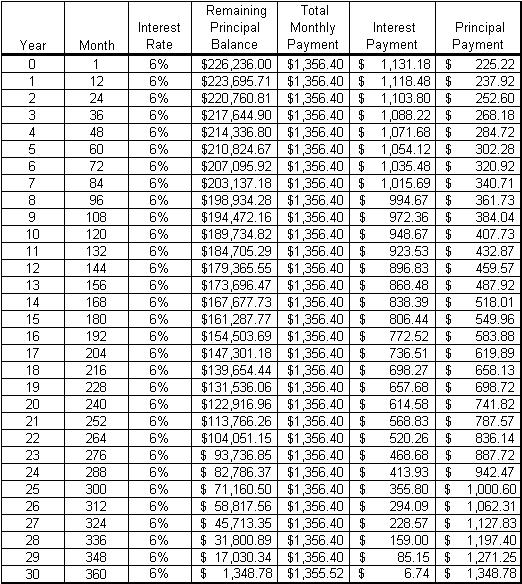 amitorization schedules::In this article, we are going to first discuss how to use amortization schedules, and then talk briefly about amortization calculations.
amitorization schedules::In this article, we are going to first discuss how to use amortization schedules, and then talk briefly about amortization calculations.The concept of using amortization tables has its beginnings in the accounting world.
Amortizing a loan is different than the concept of depreciating an asset.
In the consumer world, amortization schedules are used to demonstrate how a , such as a or a over time.
Putting together a schedule in a spreadsheet is fairly straightforward, with the most important variables affecting the calculation being: loan amount or principal this is the amount of the original loan, and is the starting point for the.
Interest rate on loan this is simply the that you are charged for the use of the money, and the risk associated with the loan.
Term of loan this is the length of time over which the loan will be paid off.
This process seems simple, right?
From the above three pieces of information, you can produce all of the amortization calculations or formulas that you need to produce an amortization table.
Loan payment perhaps the most mysterious calculation used in an amortization schedule because it relies on a complex formula to perform the calculation.
Principal this column of information shows the amount of the monthly payment that is applied towards reducing the principal of the loan.
Interest this column in an amortization table shows you the amount of the monthly payment that is associated with interest charges.
Balance this is usually the final calculation performed in the amortization table.
Now that you understand the elements that go into the calculation of an amortization schedule, and what the output looks like, here are the seven different amortization tables you can download.
Each of these spreadsheet models allows you to change all the necessary variables to customize the table to your particular loan.
Earlier we explained the typical calculations, and columns of information appearing in an amortization table.
Notice that the amortization spreadsheet also has an input labeled extra payment to principal.
Комментариев нет:
Отправить комментарий